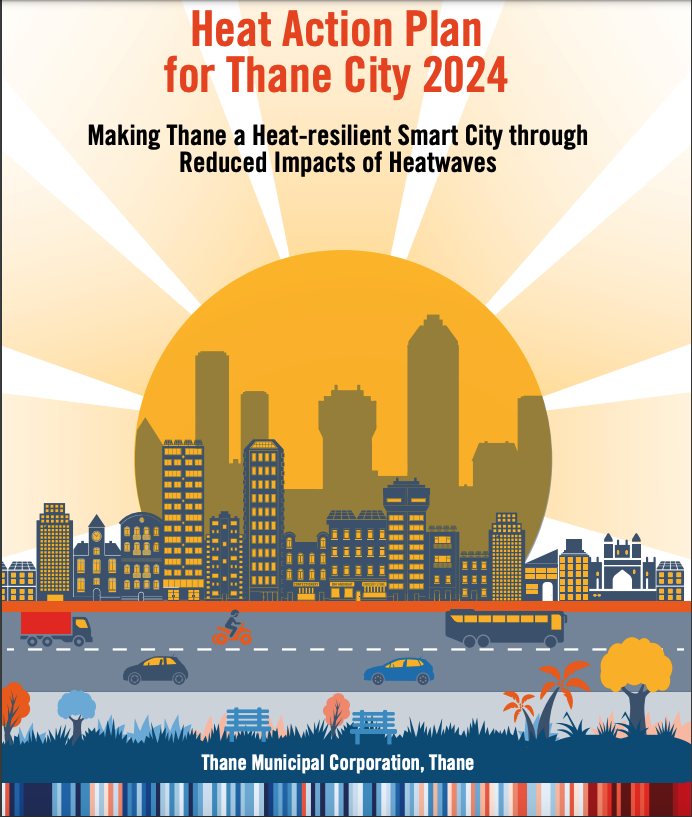Heat Action Plan for Thane City 2024
Organization: Thane Municipal Corporation & Delhi: Council on Energy, Environment and Water (CEEW).
Year: 2024

The Heat Action Plan (HAP) of Thane City has been formulated using a combination of climate datasets and climate projections from sources such as the Indian Monsoon Data Assimilation and Analysis (IMDAA) and Regional Climate Models (RCMs) from the Ministry of Earth Sciences (MoES) for the period from 1982 to 2040. It combines these climatic datasets with onground socioeconomic data and satellite-derived indices to map Thane City’s heat risk.
Climatic projections for India indicate that heat extremes are likely to intensify, occur more frequently, last longer, and impact wider geographical areas not previously impacted. Other factors, such as humidity and urban heat islands, particularly in cities, will further exacerbate and compound the risks associated with these extremes. With such record-breaking heat waves already being witnessed nationwide, there is an urgent need to develop and implement heat risk mitigation and adaptation strategies to reduce the impacts of heat waves across various geographical scales.
Thane City’s administration attempted to address these challenges by developing a city-level heat action plan, offering insights into heat risks considering historical trends and projections of dry temperature extremes, humidity, warm nights, and socioeconomic factors at a detailed ward/ Prabhag Samitee level (Figure ES1). The primary objective was to mitigate the impact of heat stress on human health and establish effective pathways for preparedness and response mechanisms.